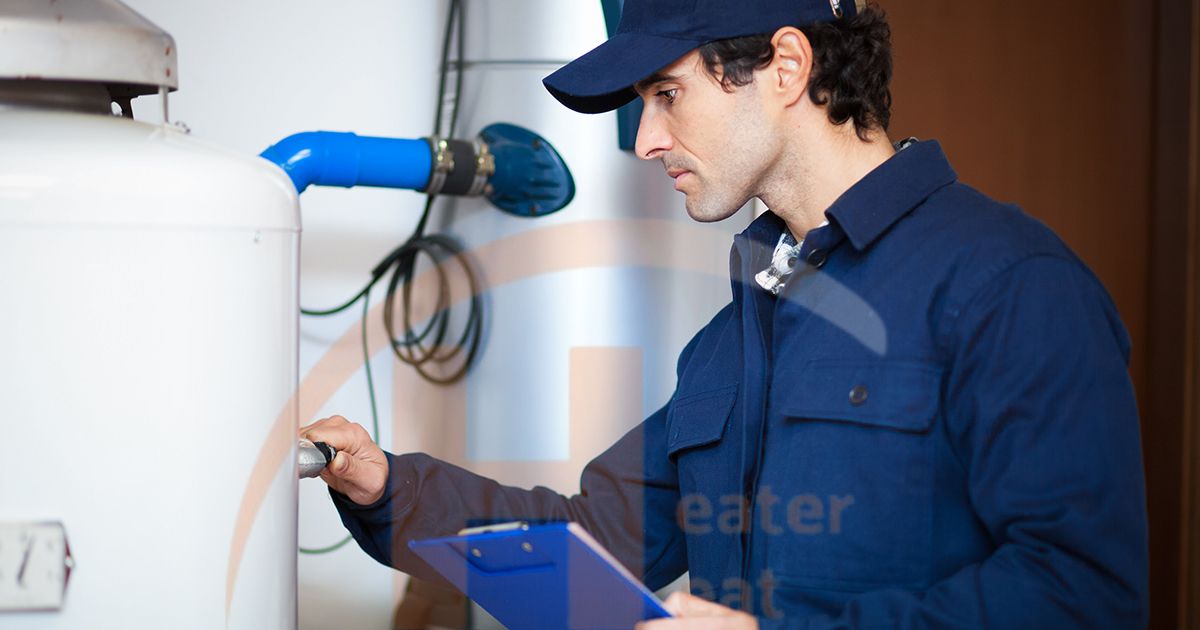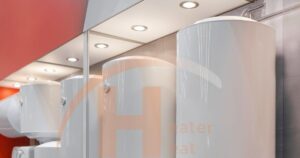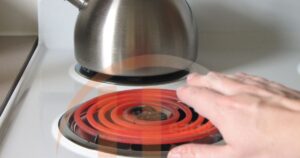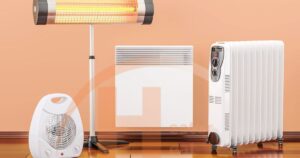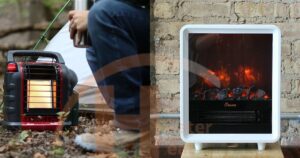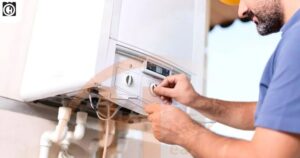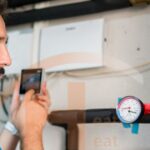A hot water cylinder serves as the heart of your home’s water heating system, providing a steady supply of warm water for various domestic activities. This essential component efficiently stores and heats water, ensuring a reliable source for baths, showers, and household chores.
Imagine waking up to a cold shower – a shiver-inducing experience no one fancies. That’s where the hot water cylinder steps in, silently working behind the scenes to deliver that blissfully warm cascade. Today, we’ll unravel the mysteries surrounding the replacement of this unsung hero, exploring the cost implications and factors influencing your home’s daily dose of warmth.
Whether it’s a veteran hot water cylinder showing signs of wear or a desire to upgrade to a more efficient system, understanding the cost to replace is crucial. In this guide, we navigate the realm of hot water systems, delving into the considerations when deciding between maintenance and repairs or opting for a brand-new setup. Stick around for insights into pricing guides, low-pressure systems, and the nuances of mains pressure hot water cylinders.
Types of Hot Water Cylinders

Hot water cylinders come in various types, each tailored to meet specific household needs. Understanding these options is pivotal when contemplating a replacement. Let’s explore the diverse landscape of hot water cylinders and their unique characteristics.
- Vented Cylinders: These traditional systems rely on gravity to distribute hot water, making them suitable for older homes with low-pressure requirements.
- Unvented Cylinders: Modern and pressurized, unvented cylinders offer improved water pressure, making them ideal for contemporary living spaces.
- Thermal Store Cylinders: This innovative option separates hot water production and storage, providing flexibility and efficiency.
Vented vs. Unvented Cylinders
Vented cylinders, with their reliance on gravity, are well-suited for homes with existing low-pressure setups. They are cost-effective and often integrate seamlessly into older properties. On the flip side, unvented cylinders operate under higher pressure, ensuring a powerful flow for modern lifestyles. However, they may require additional safety measures to manage increased pressure levels.
When considering vented vs. unvented, factors such as installation complexity and space requirements come into play. While vented cylinders may be simpler to install, unvented options demand careful attention to safety measures, including pressure relief devices. Ultimately, the decision hinges on your home’s infrastructure and your desired water pressure.
Material Options
Stainless steel, renowned for its corrosion resistance, is a popular choice, ensuring longevity and minimal maintenance. Copper, on the other hand, boasts excellent heat conductivity, leading to faster water heating. Understanding the advantages and considerations of each material is key when making an informed decision about your new hot water cylinder.
Consider the specific needs of your household – whether prioritizing longevity, efficiency, or a balance of both. Stainless steel and copper stand as sturdy contenders, and the right choice depends on factors such as budget, desired lifespan, and the environmental conditions your hot water system will face.
Capacity Considerations
Assessing the size of your household and daily hot water demands is the first step in capacity considerations. A larger family or frequent use of hot water appliances may necessitate a cylinder with a higher capacity to prevent any unwelcome surprises during peak usage times.
Opting for a cylinder that exceeds your needs may result in unnecessary energy consumption. Striking the right balance between capacity and efficiency ensures that you not only meet your current demands but also future-proof your hot water system. Consider the number of bathrooms, frequency of use, and the overall lifestyle of your household when determining the optimal capacity for your new hot water cylinder.
Repair or Replace Your Hot Water Cylinder?

When faced with issues such as leaks, reduced efficiency, or frequent breakdowns, the question arises – repair or replace? The answer often depends on the severity of the problems and the overall age of your hot water cylinder. A repair may suffice for minor issues, but if the system is approaching the end of its lifespan or presenting recurring problems, a replacement could be a more cost-effective and sustainable solution.
Consider the long-term benefits of investing in a new hot water cylinder that utilizes Electricity An Electric Heater Use. Modern systems are often more energy-efficient, incorporating advanced technologies that can lead to significant savings on your energy bills. A new cylinder provides an opportunity to align your hot water system with the latest industry standards, ensuring optimal performance and reliability.
What’s Wrong with the Existing Hot Water Cylinder?
Leaks and corrosion can compromise the efficiency and safety of your hot water system. Identifying the source of leaks and assessing the extent of corrosion is essential. Leaks may lead to water wastage and property damage, while corrosion can weaken the structure of the cylinder, making it prone to failure.
Reduced hot water supply and inefficient heating performance are telltale signs of underlying problems. Whether caused by sediment buildup, a faulty heating element, or an aging system, these issues can significantly impact your daily comfort. Regular maintenance and prompt identification of these issues can help extend the lifespan of your hot water cylinder.
- Leakages: Unchecked leaks not only waste water but can also cause structural damage to the surrounding area.
- Reduced Efficiency: A decline in the system’s ability to efficiently heat water may indicate internal issues that compromise its functionality.
- Strange Noises: Unusual sounds during operation might signal problems such as sediment buildup or a failing heating element.
How Old is the Existing Hot Water Cylinder?
Hot water cylinders, like any appliance, have a finite lifespan. Knowing the age of your system helps gauge its reliability and the potential need for replacement. If your cylinder is nearing or has surpassed its expected lifespan, it might be prone to more frequent breakdowns and reduced efficiency.
Understanding the manufacturing date and expected lifespan of your hot water cylinder allows you to make informed decisions about its future. If the system is relatively young and experiencing minor issues, repairs may suffice. However, an older cylinder with multiple issues might warrant serious consideration for replacement, ensuring your home has a reliable hot water supply for years to come.
Signs that a Hot Water Cylinder Needs Replacement
One clear indicator that replacement might be imminent is a reduced hot water supply. If your once ample stream of warm water has dwindled to a mere trickle, it could signal internal issues such as sediment buildup or a failing heating element. Recognizing these signs early on allows for timely intervention, preventing disruptions to your daily routines.
Leaks, corrosion, and inefficient heating performance are additional red flags that your hot water cylinder might be reaching the end of its serviceable life. Whether it’s water pooling around the system, visible signs of rust, or a noticeable decline in heating efficiency, these issues collectively suggest that the time for a new hot water cylinder has arrived.
Reduced Hot Water Supply
Few things are more frustrating than turning on the tap, and expecting a comforting stream of hot water, only to be met with a lukewarm or inadequate flow. Reduced hot water supply can result from factors such as sediment accumulation, a failing thermostat, or an aging heating element. Identifying and addressing these issues promptly can help restore your hot water system’s optimal performance.
Beyond mere inconvenience, a consistent reduction in hot water supply may also hint at the overall health of your hot water cylinder. Aging components or internal damage could be contributing to the decreased efficiency. When faced with a continuous decline in performance, it’s prudent to consider the possibility that your system may be approaching the end of its functional lifespan.
Leaks and Corrosion

Unchecked leaks can lead to water wastage, property damage, and increased utility bills. Whether from a visible source or subtle drips, identifying and addressing leaks promptly is crucial. Corrosion, often indicated by rust-colored water or visible damage on the cylinder’s surface, not only compromises the system’s structural integrity but can also impact water quality.
Leaks and corrosion are often interconnected issues, with one exacerbating the other. Seals and joints may degrade over time, allowing water to escape and promote corrosion. The combination of these factors can lead to irreversible damage, making it imperative to consider replacement, especially if the issues persist despite attempted repairs.
Inefficient Heating Performance
Inefficient heating performance is more than a mere inconvenience; it’s a warning sign that your hot water cylinder may be struggling to meet the demands of your household. Factors such as a failing heating element, sediment accumulation, or an outdated thermostat can contribute to these inefficiencies, making it essential to assess the system’s overall health.
When hot water takes longer to reach desired temperatures or fails to maintain consistent warmth, it’s time to investigate the root causes. Addressing issues promptly is not only about restoring comfort but also about preventing further wear and tear on your hot water cylinder. If inefficient heating persists despite maintenance efforts, replacement becomes a sensible consideration for improved energy efficiency and performance.
Age of the Hot Water Cylinder
Hot water cylinders, like many household appliances, have a finite lifespan. Knowing the manufacturing date and expected lifespan of your system allows you to gauge its overall health and predict potential issues. An older hot water cylinder may be more prone to breakdowns and reduced efficiency, prompting careful consideration of whether it’s time for an upgrade.
As your hot water cylinder ages, internal components may experience wear and tear, affecting the overall efficiency of the system. Regular maintenance can mitigate some issues, but if your cylinder is approaching or has surpassed its expected lifespan, replacement becomes a strategic investment in a reliable and energy-efficient hot water supply for your home.
Cost Factors in Replacing a Hot Water Cylinder
The primary considerations in the cost of replacing a hot water cylinder involve the type and material of the cylinder chosen. Vented, unvented, or thermal store cylinders each come with distinct price tags, influenced by their features and functionalities. |The materials used, such as stainless steel or copper, contribute significantly to the overall cost, as they impact durability and performance.
Installation and labor expenses are equally substantial components of the overall cost. The complexity of the installation process, whether it involves a straightforward replacement or adjustments to accommodate a new system, can influence the labor costs. Being mindful of these factors allows homeowners to budget effectively and explore cost-saving opportunities without compromising the quality of the replacement.
Cylinder Type and Material Costs

The choice between vented, unvented, or thermal store cylinders significantly impacts the replacement cost. Vented cylinders, relying on gravity, tend to be more cost-effective and are often suitable for older homes with low-pressure systems. Unvented cylinders, offering pressurized hot water, come at a higher initial cost but provide enhanced water pressure for modern living. The material of the cylinder, whether stainless steel or copper, introduces variability in pricing, with stainless steel being a durable yet more economical choice compared to the premium nature of copper.
Understanding the trade-offs between cylinder types and materials is crucial when determining the most cost-effective solution for your home. While certain options may have higher upfront costs, their durability, and efficiency can lead to long-term savings, making them worthwhile investments. Balancing your budget with the desired features ensures that the replacement aligns with both your financial considerations and your household’s hot water needs.
Installation and Labor Expenses
The complexity of the installation process is a primary determinant of labor costs. Replacing a hot water cylinder may involve straightforward installations in some cases, where the new system seamlessly fits into the existing setup. However, if adjustments or modifications are necessary to accommodate a different type or size of cylinder, the labor costs may increase accordingly.
Professional installation is essential to ensure the optimal performance and safety of the hot water system. While labor expenses contribute to the overall cost, the expertise and precision of experienced professionals help prevent potential issues and ensure a seamless transition. It’s advisable to obtain multiple quotes from reputable installers to find a balance between cost and quality, enhancing the overall value of the replacement process.
Additional Components
Certain hot water systems may require additional components like expansion vessels to manage pressure fluctuations effectively. These vessels, along with valves and other supplementary elements, contribute to the overall cost but are integral to the proper functioning of the system. Understanding these requirements during the replacement process ensures that the new cylinder is equipped with the necessary components for optimal performance.
While additional components may increase the initial cost, they play a crucial role in the efficiency and longevity of the hot water system. Investing in quality expansion vessels and valves can prevent issues such as pressure-related damage and contribute to the overall reliability of the system. Balancing these considerations with the initial cost is key to making a well-informed decision that aligns with your long-term hot water needs.
Removal and Disposal of Old Cylinder
The removal of the old cylinder involves careful disconnection and extraction from its existing location. The complexity of this process can vary based on the type and size of the cylinder, as well as any modifications required for the new system. Labor costs associated with removal contribute to the overall expense, making it essential to consider this aspect when budgeting for a replacement.
Disposing of the old cylinder responsibly is equally important. Depending on local regulations, there may be specific guidelines for the disposal of hot water cylinders, especially if they contain materials that require special handling. Choosing an environmentally conscious approach to disposal ensures compliance with regulations and minimizes the ecological impact of the replacement process, aligning with sustainable practices for a greener home improvement initiative.
Average Cost Estimates
On average, the cost to replace a hot water cylinder can range from a few hundred to over a thousand dollars, depending on various factors. This encompasses the price of the new cylinder itself, installation and labor fees, and any additional components required. Understanding these average costs provides a baseline for homeowners to assess their budgetary considerations and make decisions aligned with their financial capacity.
It’s crucial to note that average cost estimates can fluctuate based on specific circumstances and preferences. Factors such as the type of cylinder chosen, the materials involved, and the complexity of the installation contribute to these variations. By delving into national averages and examining the intricacies of the replacement process, homeowners can gain a clearer picture of what to expect financially when embarking on a hot water cylinder replacement project.
National Averages for Cylinder Replacement
In the United States, the national average cost for hot water cylinder replacement typically falls within the range of $800 to $1,500. This estimate includes the cost of the new cylinder, installation, and labor expenses. However, it’s essential to recognize that these figures are generalizations, and actual costs can deviate based on various factors, including geographic location, the type of cylinder selected, and the specific requirements of the installation.
Understanding national averages serves as a helpful starting point, offering homeowners a benchmark to gauge their potential investment. However, it’s vital to delve deeper into the intricacies of cost estimates, considering local market dynamics, service provider rates, and individual project specifications. By doing so, homeowners can refine their budgetary expectations and make more informed decisions regarding the replacement of their hot water cylinders.
Variances Based on Geographical Location
Geographic location plays a pivotal role in determining replacement costs, as the cost of living and market dynamics differ across regions. In metropolitan areas, where living expenses are typically higher, homeowners may encounter elevated service provider rates and increased material costs. In more rural settings or regions with a lower cost of living, replacement costs might be comparatively more affordable.
Service provider rates also contribute significantly to cost variances. Different plumbers or installation professionals may have varying pricing structures based on factors such as experience, expertise, and demand for their services. Homeowners are encouraged to obtain multiple quotes from reputable service providers in their local area, allowing them to compare rates and choose a provider that aligns with both their budget and quality expectations.
Comparative Costs for Different Types
The choice between vented, unvented, or thermal store cylinders introduces cost variations. Vented cylinders, being simpler in design, often come with a lower upfront cost, making them an attractive option for budget-conscious homeowners. Unvented cylinders, offering pressurized hot water, generally incur a higher initial expense due to their advanced features. The material of the cylinder, whether stainless steel or copper, impacts costs, with stainless steel being a more cost-effective yet durable alternative compared to the premium nature of copper.
Comparative costs for different types and materials require a thoughtful examination of the trade-offs involved. While vented cylinders may offer affordability, unvented systems could provide enhanced efficiency and performance, justifying their higher upfront cost. Similarly, understanding the financial implications of opting for stainless steel over copper involves considering factors such as lifespan, maintenance, and overall system longevity. By weighing these comparative costs, homeowners can align their choices with both budget constraints and long-term value.
Tips for Reducing Cylinder Replacement Costs

One effective strategy to minimize replacement costs is regular maintenance. By addressing issues promptly and ensuring the optimal performance of your existing hot water cylinder, you can extend its lifespan and delay the need for a costly replacement. Considering energy-efficient options and upgrading insulation contribute to enhanced efficiency, potentially leading to lower operational costs over time.
Another cost-saving tip involves obtaining competitive quotes from contractors. Shopping around for reputable professionals allows homeowners to compare rates and services, ensuring they secure the best value for their investment. By leveraging these tips, homeowners can not only minimize immediate replacement costs but also set the stage for long-term savings through improved system efficiency and reliability.
Regular maintenance
Regular maintenance involves inspecting the cylinder for signs of wear, addressing minor issues promptly, and conducting routine cleaning to prevent sediment buildup. Flushing the system to remove accumulated sediment not only enhances performance but also reduces strain on internal components. By adhering to a consistent maintenance schedule, homeowners can maximize the lifespan of their hot water cylinders, postponing the need for a costly replacement.
Routine checks on valves, thermostat calibration, and anode rod inspections are integral aspects of maintenance that can identify potential problems early on. These proactive measures not only contribute to the longevity of the hot water cylinder but also enhance its overall efficiency. Considering the relatively low cost of maintenance compared to a full replacement, investing time and resources in these practices proves to be a financially prudent approach for homeowners.
Upgrading insulation
Upgrading insulation around the hot water cylinder minimizes heat loss, ensuring that the water remains at the desired temperature for longer periods. This not only results in increased energy efficiency but also reduces the workload on the heating element, potentially extending its lifespan. By focusing on insulation improvements, homeowners create a more energy-efficient hot water system that operates optimally, thereby lessening the need for frequent replacements.
Consideration should be given to the choice of insulation material and its thickness, as these factors significantly impact effectiveness. Wrapping the cylinder with an insulation jacket and insulating pipes can further enhance efficiency. While there may be initial costs associated with these upgrades, the long-term energy savings and the potential extension of the hot water cylinder’s lifespan make insulation enhancements a financially wise investment.
Competitive quotes from contractors
Seeking quotes from multiple contractors allows homeowners to compare not only the overall cost but also the services offered. Each contractor may have unique pricing structures, varying levels of expertise, and different warranties on their work. By shopping around, homeowners can identify a contractor who not only fits their budget but also aligns with their expectations for quality workmanship and professionalism.
It’s advisable to request detailed quotes that break down the costs, including the price of the new cylinder, labor expenses, and any additional components or services required. This transparency helps homeowners make informed decisions, ensuring that there are no hidden costs or unexpected financial surprises. Ultimately, obtaining competitive quotes empowers homeowners to choose a contractor who provides the best combination of affordability, expertise, and reliability for their hot water cylinder replacement project.
Conclusion
Navigating the landscape of hot water cylinder replacement requires a balanced understanding of various factors to ensure both efficiency and cost-effectiveness. The decision to repair or replace should be guided by the severity of existing issues, the age of the cylinder, and the long-term benefits of investing in a new system.
Recognizing signs such as reduced hot water supply, leaks, corrosion, inefficient heating, and the age of the cylinder serves as a proactive approach to addressing potential problems early on. Considering the cost factors involved, homeowners can strategize to minimize expenses. Regular maintenance proves to be a cost-effective measure, prolonging the lifespan of the hot water cylinder and mitigating the need for premature replacements.
Upgrading insulation contributes to enhanced efficiency, reducing operational costs over time. Furthermore, shopping around for competitive quotes from contractors empowers homeowners to find the best balance between affordability and quality.
In this pursuit, understanding national averages, geographical variances, and comparative costs for different types and materials assists homeowners in budget planning. By incorporating these insights, individuals can make informed decisions that align with their financial considerations while ensuring a reliable and energy-efficient hot water system for their homes.
Frequently Asked Questions
What is the average cost of replacing a hot water cylinder?
The national average typically ranges from $800 to $1,500.
How can I prolong the lifespan of my hot water cylinder?
Regular maintenance, including flushing and checks on components, is crucial.
Does the type of hot water cylinder affect replacement costs?
Yes, with vented cylinders generally being more affordable than unvented or thermal store cylinders.
Can upgrading insulation save on hot water system costs?
Yes, improved insulation minimizes heat loss, enhancing efficiency and reducing operational expenses.
Why is shopping around for quotes important?
Obtaining competitive quotes allows homeowners to compare costs, and services, and find the best value for their investment.

Mark Edward, with 6 years of expertise in Electric Heaters, is the author at heaterheat.com. His in-depth knowledge provides valuable insights into efficient heating solutions, making him a trusted resource.
